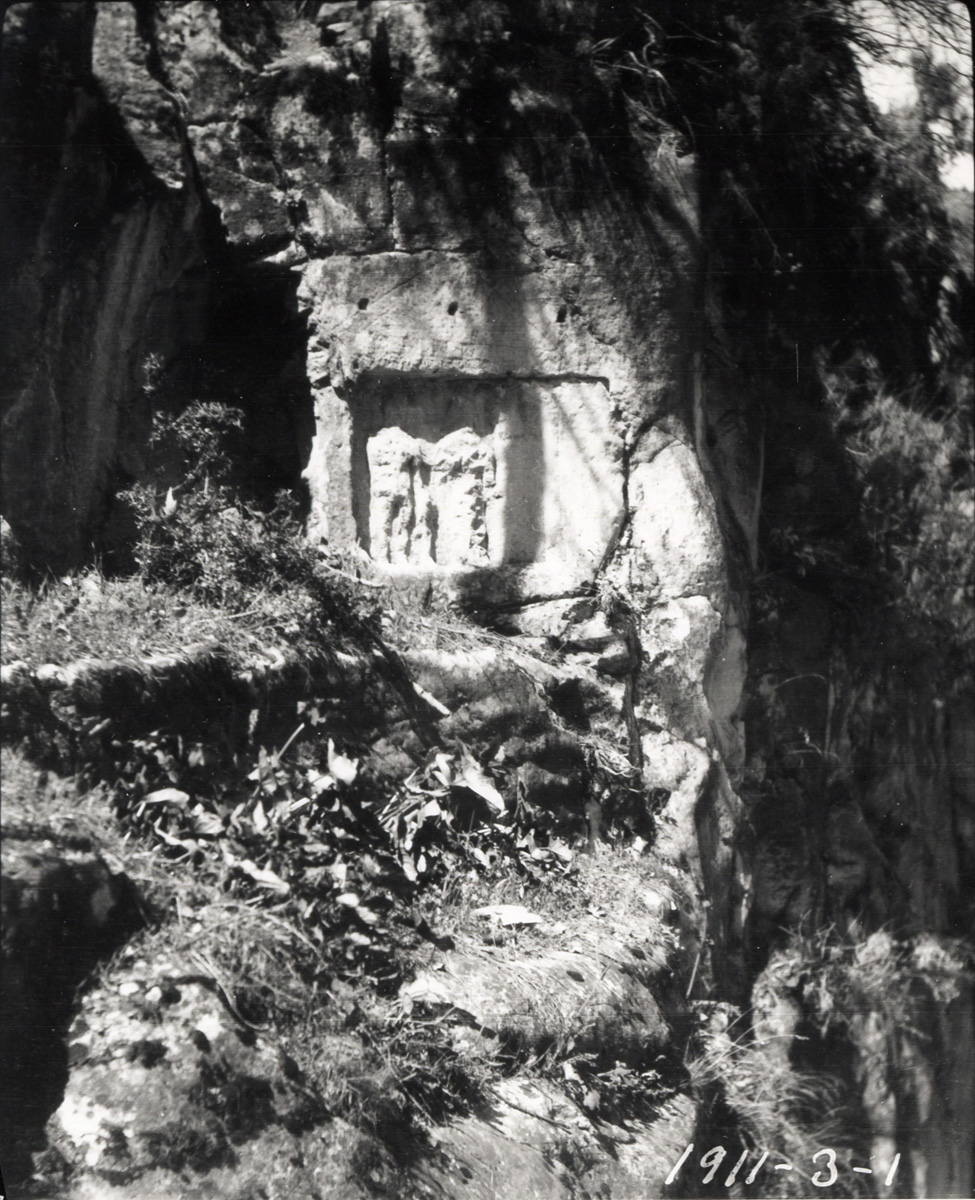-
 Relief Fragment with Reclining and Standing Figures. Inscription on Reverse
Relief Fragment with Reclining and Standing Figures. Inscription on ReverseR2 Cat. 145
Sculpture
Marble, Stone
2nd C. AD? (Roman)
The two fragmentary figures are separated by a vertical band, W. 0.03. Figure at l. is a youthful male with chlamys over both shoulders and a sleeved tunic. Three horizontal swinging folds are on his chest. His head is broken off at the neck. He recl...
-
 Two Blocks Showing Venatio Scenes
Two Blocks Showing Venatio ScenesR2 Cat. 146
Sculpture
Marble, Stone
2nd or 3rd C. AD (Roman)
A belongs to the l. of B. Both blocks are in two registers depicting scenes of venatio and wild beast fights.
A. Upper Register: bull, destroyed behind front legs, facing man (nude or wearing trunks). Also a bear, standing on hind legs, fighting a bul...
-
 Marble Frieze Slab with Venatio Scene (Bulls and Boar)
Marble Frieze Slab with Venatio Scene (Bulls and Boar)R2 Cat. 147
Sculpture
Marble, Stone
3rd-4th C. AD (or later?) (Roman)
The three reliefs which follow, two venatio compositions and an enigmatic cult scene, were found together, by chance, in a vegetable garden, ca. 145 m. W of PBr and ca. 130 m. E of the mausoleum of Claudia Antonia Sabina (No. 32.1 on Fig. 1; the find...
-
 Marble Frieze Slab with Venatio Scene
Marble Frieze Slab with Venatio SceneR2 Cat. 148
Sculpture
Marble, Stone
3rd-4th C. AD (Roman)
The three reliefs which follow, two venatio compositions and an enigmatic cult scene, were found together, by chance, in a vegetable garden, ca. 145 m. W of PBr and ca. 130 m. E of the mausoleum of Claudia Antonia Sabina (No. 32.1 on Fig. 1; the find...
-
 Marble Frieze Slab with Cult Scene at a Tree
Marble Frieze Slab with Cult Scene at a TreeR2 Cat. 149
Sculpture
Marble, Stone
3rd-4th C. AD (Roman)
The three reliefs which follow, two venatio compositions and an enigmatic cult scene, were found together, by chance, in a vegetable garden, ca. 145 m. W of PBr and ca. 130 m. E of the mausoleum of Claudia Antonia Sabina (No. 32.1 on Fig. 1; the find...
-
 Stele of Menandros Apol(l)oniou with Gorgoneion in Pediment and Inscription
Stele of Menandros Apol(l)oniou with Gorgoneion in Pediment and InscriptionR2 Cat. 150
Sculpture
Marble, Stone
3rd C. AD? (Roman)
The stele tapers markedly upward. It had a simple profile projecting over the l. and r. sides. A steep pediment (int. H. 0.20; int. W. 0.31) has a crude gorgon’s head. The bottom of the pediment is constituted by six horizontal flower calyxes, and in...
-
 Stele with Standing Draped Woman
Stele with Standing Draped WomanR2 Cat. 151
Sculpture
Marble, Stone
Probably 3rd C. AD (Roman)
The relief is probably from a funerary stele. There is no indication whether there were more figures. The woman is standing, head turned to her r. with slightly bent r. arm across chest. Based on a Hellenistic type with short upper, long lower body, ...
-
 Top Fragment of Stele with Standing Woman
Top Fragment of Stele with Standing WomanR2 Cat. 152
Sculpture
Marble, Stone
3rd C. AD? (Roman)
Steep triangular pediment has an incised line following edge of stele; base of triangle is a broken entablature. Within the triangle is an arch supported by impost blocks, which in turn rest on the base of the triangle, all with beveled sides. Within...
-
 Stele Fragment with Gladiator Relief
Stele Fragment with Gladiator ReliefR2 Cat. 153
Sculpture
Marble, Stone
3rd C. AD? (Roman)
The gladiator, clutching a short sword in his r. hand, strides toward the r. He is enclosed by a rectangular cutting. Below his feet was an inscription, giving the man’s name; all that remains is ΚΟΣ. The gladiator wears a heavy helmet with squared t...
-
 Gladiator
GladiatorR2 Cat. 154
Sculpture
Marble, Stone
3rd C. AD? (Roman)
The gladiator’s helmet has a protective flap covering his neck; the face is exposed. His round shield, covering the front and l. side of his body, has a small elongated knob in the front center, cf. Cat. 153 (Fig. 298). His body does not seem to be p...
-
 Five Gladiators
Five GladiatorsR2 Cat. 155
Sculpture
Marble, Stone
3rd or 4th C. AD (Roman)
A horizontal frieze shows five gladiators, fighting in pairs. Just above their heads is a projecting ledge, above which are traces of a second frieze. Each man wears a helmet with projections to protect the neck, and each has padded legs. The second ...
-
 Rock-Cut Relief Aedicula with Two Frontal Figures
Rock-Cut Relief Aedicula with Two Frontal FiguresR2 Cat. 156
Sculpture
Marble, Stone
3rd-2nd C. BC (Hellenistic)
The architectural frame consists of a rather steeply pitched pediment outlined on the rock with rows of points. Underneath the pediment is a row of (originally 16?) rectangles alternately projecting and recessed; 8 raised and 4 recessed rectangles su...